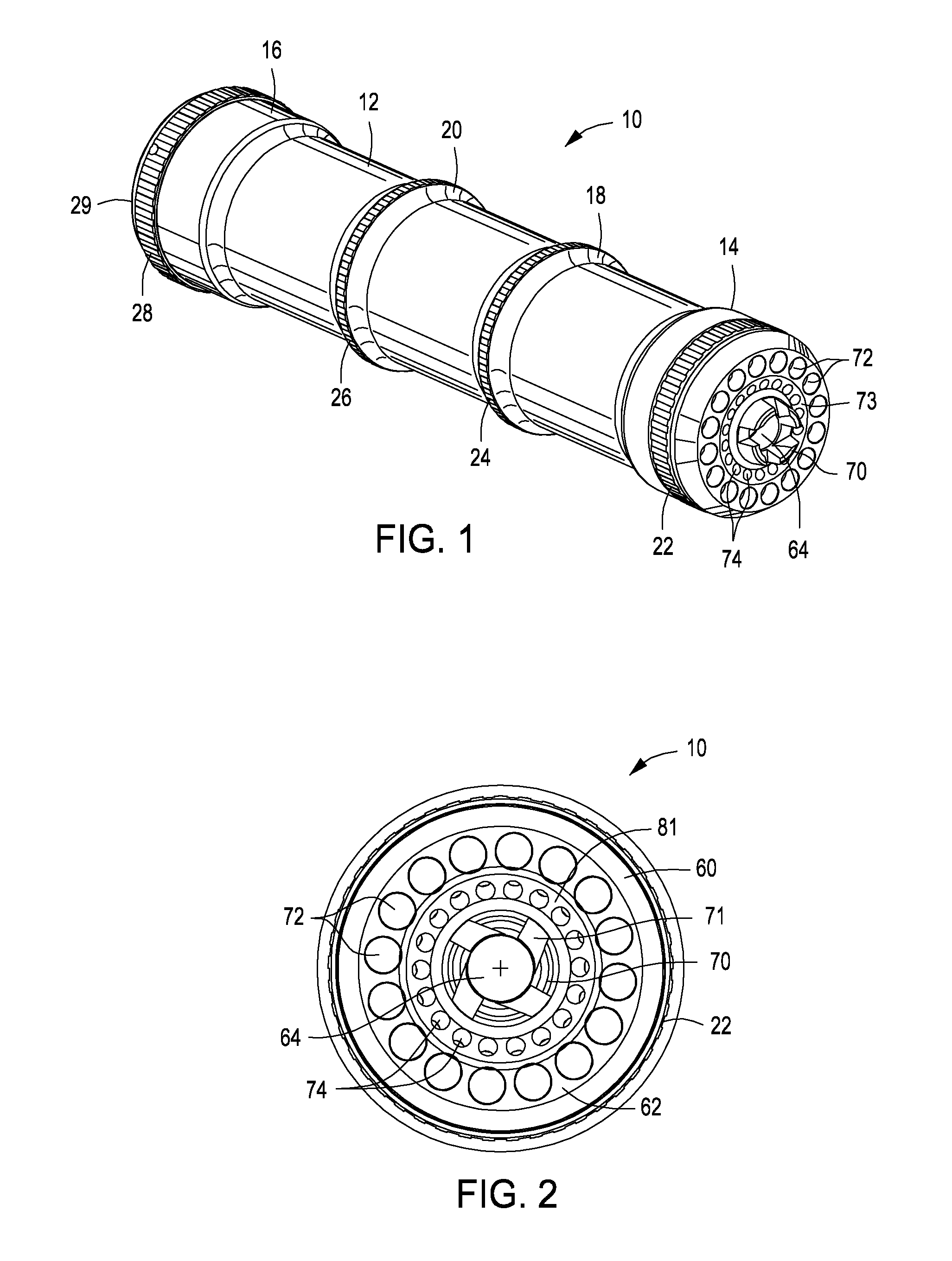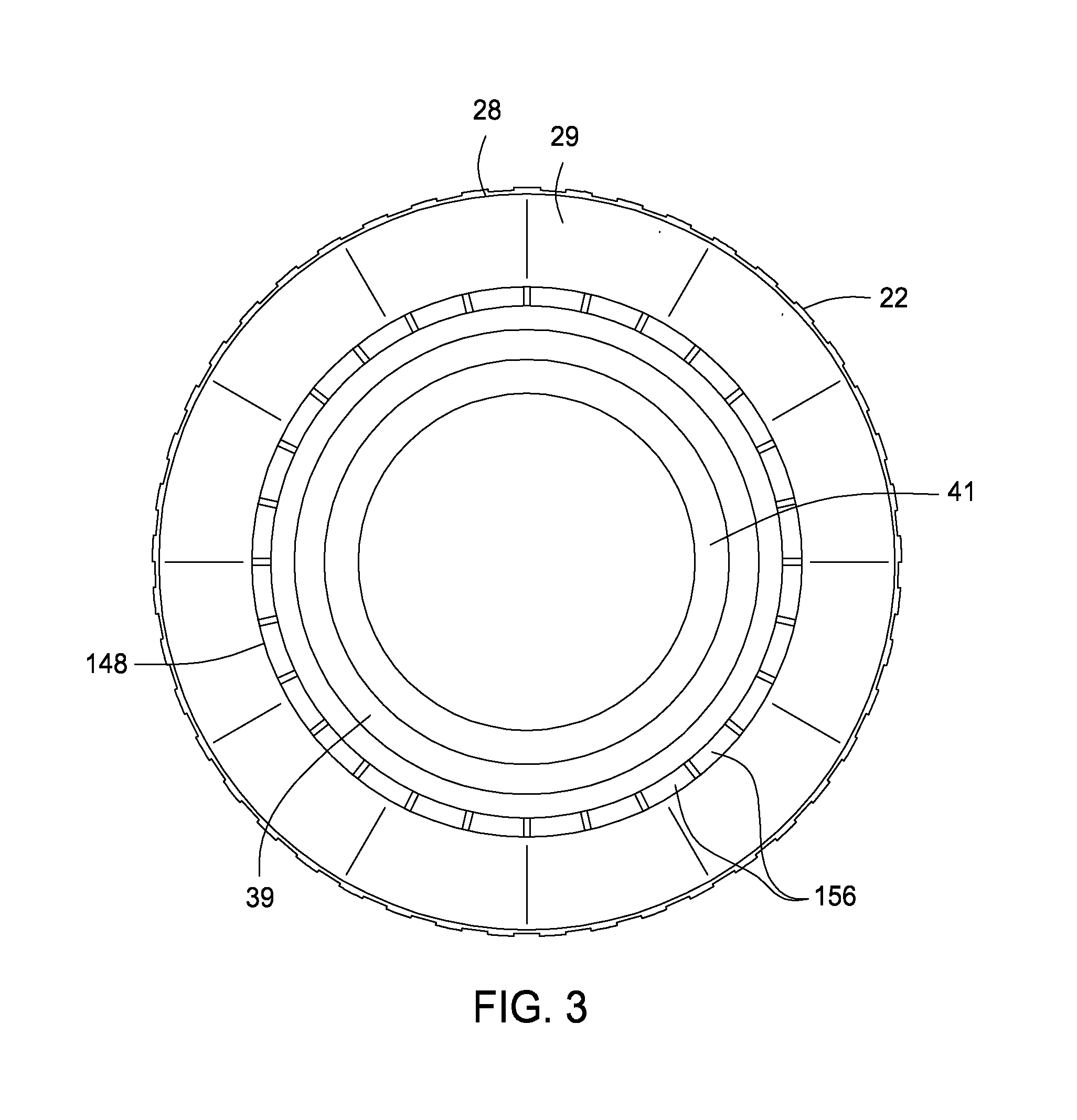Firearm sound and flash suppressor having low pressure discharge
a suppressor and low-pressure technology, applied in the field of suppressors, can solve the problems of threaded connections becoming difficult to separate, baffles, chambers and threads being clogged, and baffles typically becoming fouled
- Summary
- Abstract
- Description
- Claims
- Application Information
AI Technical Summary
Benefits of technology
Problems solved by technology
Method used
Image
Examples
Embodiment Construction
[0026]Referring now to the drawings and first to FIG. 1, a sound and flash suppressor device embodying the principles of the present invention is shown generally at 10 and incorporates an elongate tubular housing 12 having a defined length. The tubular housing 12 is strengthened at its forward and rear ends by generally cylindrical thickened enlarged housing wall sections 14 and 16 and is strengthened intermediate its extremities by annular external bosses 18 and 20 having curved side edges 21. Circular knurled regions 22, 24 and 26 are defined by the forward enlarged housing wall section and by the intermediate annular bosses 18 and 20. Another circular knurled section 28 is defined by a circular retainer cap 29 that is mounted to the rear end portion of the sound and flash suppressor assembly 10, the knurled sections being provided to facilitate secure manual grasping of the suppressor device when attaching it to or removing it from the barrel of a firearm,
[0027]As shown in detail...
PUM
 Login to View More
Login to View More Abstract
Description
Claims
Application Information
 Login to View More
Login to View More - R&D
- Intellectual Property
- Life Sciences
- Materials
- Tech Scout
- Unparalleled Data Quality
- Higher Quality Content
- 60% Fewer Hallucinations
Browse by: Latest US Patents, China's latest patents, Technical Efficacy Thesaurus, Application Domain, Technology Topic, Popular Technical Reports.
© 2025 PatSnap. All rights reserved.Legal|Privacy policy|Modern Slavery Act Transparency Statement|Sitemap|About US| Contact US: help@patsnap.com



